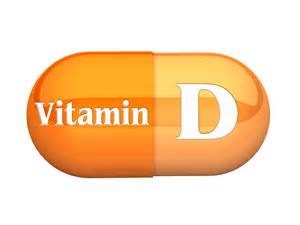
Vitamin D may help prevent macular degeneration
Most commonly known for its benefit in bone strengthening, Vitamin D is now being studied for its ability in preventing age-related macular degeneration (AMD) in women who may be genetically predisposed to this disease.
Data from over 1200 women, ages 54 to 74, was studied. The individuals had participated in the Age-related Eye Disease Study (CAREDS) which was part of a major Women’s Health Initiative Observational Study funded by the National Institute of Health.
Participants Vitamin D status was determined by serum samples of the Vitamin D biomarker 25-hydroxyvitamin D (25(OH)D). This biomarker gives a look into the Vitamin D intake from sources including food, supplements and sunlight.
Researchers found that women with the genetic predisposition for AMD and were deficient in Vitamin D were 6.7 times more likely to develop the disease than women whose Vitamin D status was sufficient and were not a high risk genotype. Researcher concluded that being deficient in Vitamin D may increase an individual’s risk for AMD and this greatest for those who are genetically predisposed to this disease.
The skin can make Vitamin D when exposed to ultraviolet light. However many people, especially in the winter months and those who limit their exposure to the sun may need to increase their dietary intake of this nutrient either through food or supplementation.
Vitamin D, the “sunshine vitamin” is really a hormone but categorized as a vitamin. This is because a deficiency is associated with the diseases rickets (bone deformities) in children and osteomalacia (poor bone mineralization leading to weak, painful bones) in adults. The body is able to synthesize pre-vitamin D3 in the skin when exposed to sunlight. The pre-vitamin D3 is rapidly converted into vitamin D3. Vitamin D3 is then transported through the blood to the liver and kidney where it is converted into the hormone calcitriol, the active form of vitamin D. Only a few foods naturally contain vitamin D including: fatty fish and cod liver oil. Fortified foods such as milk and cereal are the major dietary sources of vitamin D. It is estimated that 40% of the U.S. population is vitamin D deficient, therefore supplementing the diet with extra vitamin D is essential for optimal health. Numerous factors influence the skin’s synthesis of pre-vitamin D3 including, location, climate, sun exposure, skin color, age and use of sunscreen. When you combine all of the factors that influence vitamin D synthesis with the existing widespread deficiency, vitamin D supplementation is the most efficient and convenient way to ensure optimal vitamin D intake.
Ask us we know:








